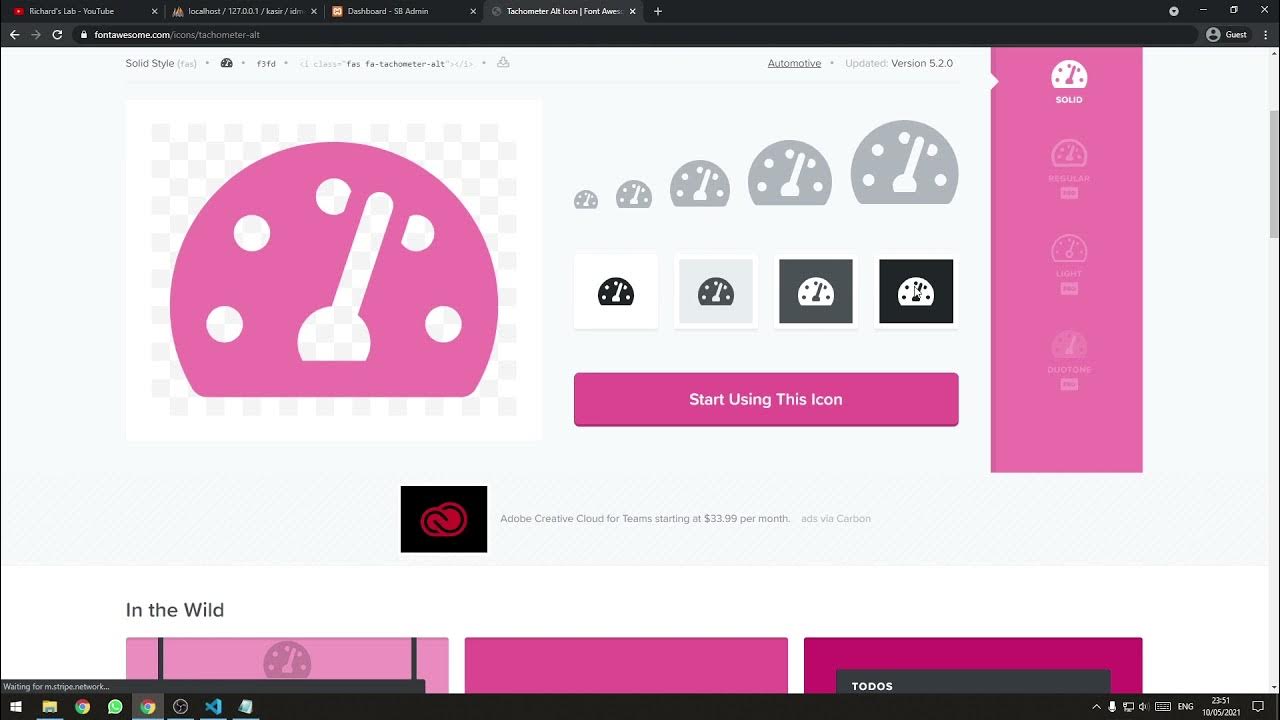Materi Code Igniter Part 1: Instalasi, Konfigurasi Awal dan Alur Framework
Summary
TLDRIn this tutorial, the speaker walks viewers through the process of setting up a bakery management application using CodeIgniter, a PHP framework. The steps include downloading and installing CodeIgniter, configuring the environment, and learning how to interact with the database. The video covers how controllers work, the importance of correct naming conventions, and troubleshooting common errors. The speaker emphasizes hands-on experimentation with tutorials and documentation, ensuring that viewers understand the foundational concepts required to build a basic web application. By the end, viewers will have a clear understanding of how to create a simple, functional application.
Takeaways
- 😀 The video provides an introduction to setting up a bakery application using CodeIgniter.
- 😀 Users are instructed to download the correct version of CodeIgniter (Version 3) for better economic benefits.
- 😀 It's recommended to use CodeIgniter as a foundation to understand web application concepts, even though it's an older version.
- 😀 After downloading, the setup involves moving the files to the 'htdocs' folder in the Apache directory to run the application.
- 😀 The video emphasizes exploring CodeIgniter’s official documentation for a better understanding of the framework.
- 😀 The tutorial includes an overview of the installation process and configuration of the framework.
- 😀 The script covers the importance of configuring a database and creating tables for the application.
- 😀 A focus is placed on the correct setup of the application folder, where users should follow naming conventions to avoid errors.
- 😀 The video walks through setting up the CodeIgniter autoload feature to load frequently used libraries automatically.
- 😀 Instructions are given to configure the database connection with specific details such as username, password, and database name.
- 😀 The video highlights the importance of correct routing in CodeIgniter and the use of controllers to manage requests and responses in the application.
Q & A
What is the first step in the tutorial?
-The first step is to download the official version of CodeIgniter, specifically version 3, as it is recommended for learning basic concepts.
Why is CodeIgniter 3 recommended for beginners?
-CodeIgniter 3 is recommended because it offers a good balance between ease of use and economic efficiency, making it suitable for those just learning the basics of web development.
How do you install CodeIgniter after downloading it?
-After downloading CodeIgniter, you need to copy it into the 'htdocs' folder of your Apache server and run it. This will display the default welcome page if everything is set up correctly.
What is the purpose of the documentation in the tutorial?
-The documentation is essential for understanding the structure of CodeIgniter, providing a comprehensive guide to installation, configuration, and usage of various features.
What should be done if some features or concepts are not fully understood?
-If certain features or concepts are unclear, the tutorial encourages users to explore additional resources or review specific sections of the documentation to deepen their understanding.
What is the recommended database configuration in the tutorial?
-The tutorial suggests configuring the database with the name 'solo99' and setting the password to '0' as part of the initial database setup.
What does the 'autoload' function in CodeIgniter do?
-The 'autoload' function in CodeIgniter automatically loads essential libraries, helpers, or databases whenever required, without needing to call them manually in every controller.
Why is the controller naming convention important in CodeIgniter?
-Controller names in CodeIgniter must follow a specific naming convention, starting with a capital letter, to ensure they are recognized and properly loaded by the framework.
What happens when the 'Welcome' controller is accessed in CodeIgniter?
-When the 'Welcome' controller is accessed, it triggers the default function ('index') within the 'Welcome' controller, displaying the default page of the application.
How does CodeIgniter handle undefined routes or controllers?
-If an undefined route or controller is accessed, CodeIgniter will search for a matching function or controller. If none is found, it will display an error page indicating the resource was not found.
Outlines

This section is available to paid users only. Please upgrade to access this part.
Upgrade NowMindmap

This section is available to paid users only. Please upgrade to access this part.
Upgrade NowKeywords

This section is available to paid users only. Please upgrade to access this part.
Upgrade NowHighlights

This section is available to paid users only. Please upgrade to access this part.
Upgrade NowTranscripts

This section is available to paid users only. Please upgrade to access this part.
Upgrade NowBrowse More Related Video

Tutorial CodeIgniter 4 untuk PEMULA | 2. Persiapan & Instalasi

[Part 2] Tutorial Aplikasi Kasir Sederhana / Penjualan Berbasis Web PHP Native - Setup Template

Belajar Membuat Website Portal Berita dengan Codeigniter 3 - #1

Tutorial CodeIgniter 4 untuk PEMULA | 1. Intro

PHP & MySQLi for Web Development - Insert & Calling Record PHP + Mysql - Part 21

Cara Membuat Perpustakaan Digital Gratis dengan SLIMS
5.0 / 5 (0 votes)